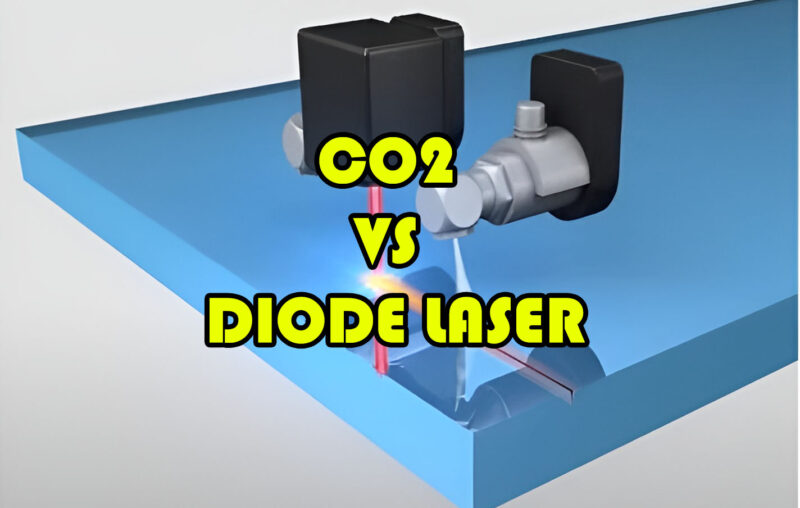CO2 vs laser diodes can be a tricky comparison, as both have their own strengths and weaknesses. Here’s a detailed comparison that will help you decide laser is right for you:
CO2 VS Laser Diodes:
-
Wavelength:
- CO2 Laser: Operates in the far-infrared range, typically around 10.6 micrometers.
- Diode Laser: The wavelength of diode laser can vary depending on the material used but generally falls in the range of 405 nm (blue) to 1550 nm (infrared).
-
Applications:
- CO2 Laser: Commonly used for cutting, engraving, and marking materials like wood, plastic, acrylic, and certain metals. It is also used in medical applications and industrial processes.
- Diode Laser: Used in a variety of applications, including telecommunications, medical procedures (such as dermatology and dentistry), and materials processing. Diode lasers are also found in consumer electronics like DVD and Blu-ray players.
ALSO READ: Circuit Board Components: Expert Guide For Engineers 2024
-
Power Efficiency:
- CO2 Laser: Typically has lower electrical efficiency compared to diode lasers which sets them back in this CO2 vs Laser Diode Comparison.
- Diode Laser: Generally more power-efficient, making them suitable for portable and battery-powered devices.
-
Size and Portability:
- CO2 Laser: Larger and less portable due to the design requirements of the gas laser technology.
- Diode Laser: Compact and lightweight, making them suitable for smaller and portable devices.
-
Cost:
- CO2 Laser: The equipment and maintenance costs for CO2 lasers can be higher.
- Diode Laser: Often more cost-effective, especially for lower-power applications and it makes them stand out in this CO2 vs Laser Diode Comparison.
-
Lifetime and Maintenance:
- CO2 Laser: Typically has a longer operational lifetime but may require more maintenance.
- Diode Laser: Generally has a shorter operational lifetime but requires less maintenance.
-
Precision:
- CO2 Laser: Known for high precision in cutting and engraving applications.
- Diode Laser: Offers good precision and is often used in applications where a smaller spot size is required.
ALSO READ: Mastering Duty Cycle Formula: A Comprehensive Guide 2024
Here’s a table giving a detailed CO2 Vs Laser Diode Comparison:
| Feature | CO2 Laser | Diode Laser |
| Power | 40W – 300W | Up to 10W |
| Materials | Wood, acrylic, leather, fabric, glass, some metals | Wood, paper, some plastics |
| Speed | Faster | Slower |
| Efficiency | More efficient | Less efficient |
| Cost | More expensive | More affordable |
| Maintenance | More maintenance | Less maintenance |
| Size | Larger and heavier | Smaller and lighter |
| Portability | Less portable | More portable |
| Safety | Requires more safety precautions | Less dangerous |
| Ease of use | More complex | Easier to use |
| Noise | Louder | Quieter |
| Air assist | Often required | Not always required |
Conclusion:
Ultimately, the best laser for you depends on your needs and budget. If you need a powerful laser for cutting and engraving a wide variety of materials, a CO2 laser is the way to go. However, if you’re on a budget or need a more portable option, a diode laser may be a better choice.









